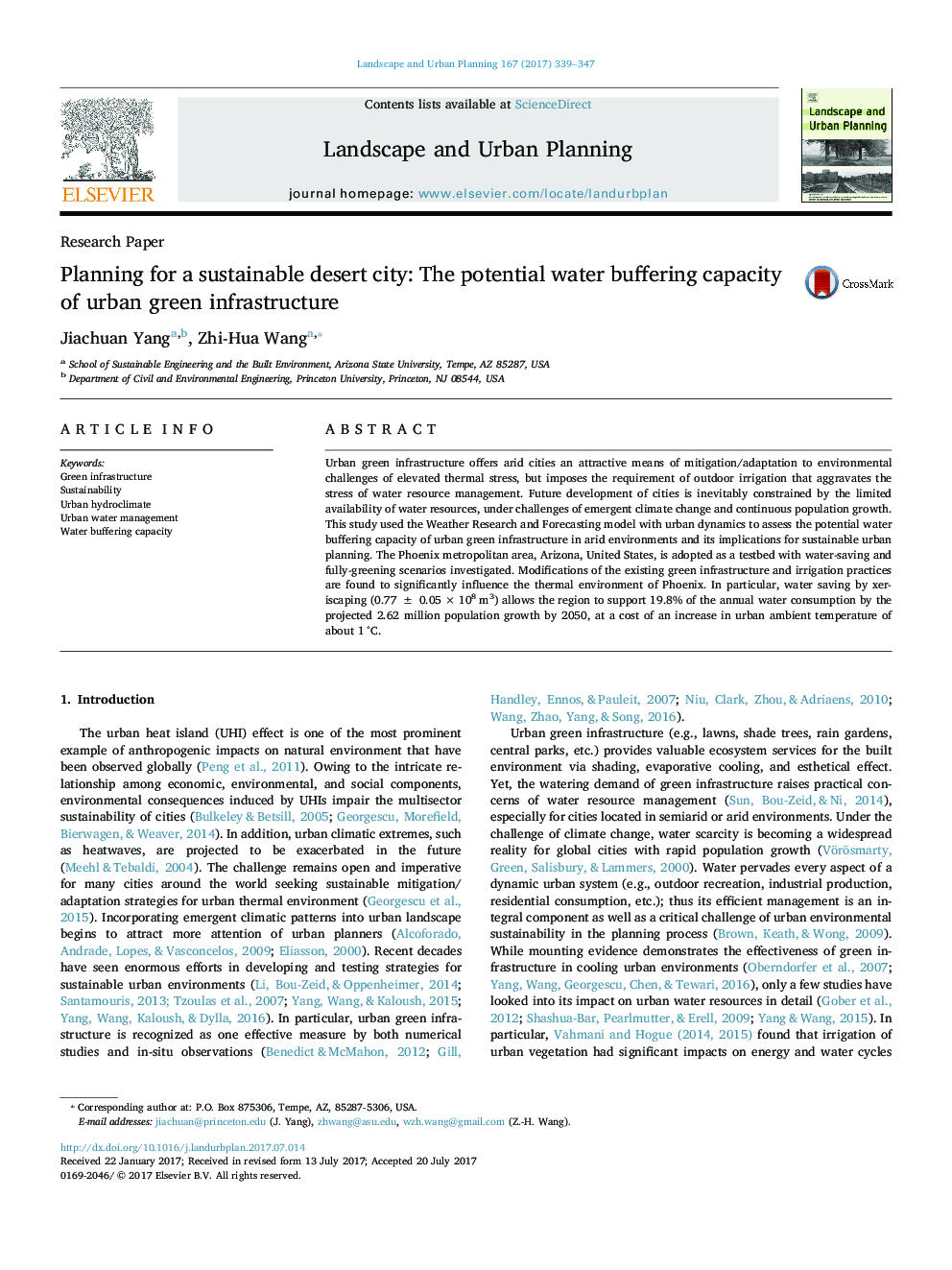| Article ID | Journal | Published Year | Pages | File Type |
|---|---|---|---|---|
| 5114964 | Landscape and Urban Planning | 2017 | 9 Pages |
Abstract
Urban green infrastructure offers arid cities an attractive means of mitigation/adaptation to environmental challenges of elevated thermal stress, but imposes the requirement of outdoor irrigation that aggravates the stress of water resource management. Future development of cities is inevitably constrained by the limited availability of water resources, under challenges of emergent climate change and continuous population growth. This study used the Weather Research and Forecasting model with urban dynamics to assess the potential water buffering capacity of urban green infrastructure in arid environments and its implications for sustainable urban planning. The Phoenix metropolitan area, Arizona, United States, is adopted as a testbed with water-saving and fully-greening scenarios investigated. Modifications of the existing green infrastructure and irrigation practices are found to significantly influence the thermal environment of Phoenix. In particular, water saving by xeriscaping (0.77 ± 0.05 Ã 108 m3) allows the region to support 19.8% of the annual water consumption by the projected 2.62 million population growth by 2050, at a cost of an increase in urban ambient temperature of about 1 °C.
Related Topics
Life Sciences
Agricultural and Biological Sciences
Ecology, Evolution, Behavior and Systematics
Authors
Jiachuan Yang, Zhi-Hua Wang,
